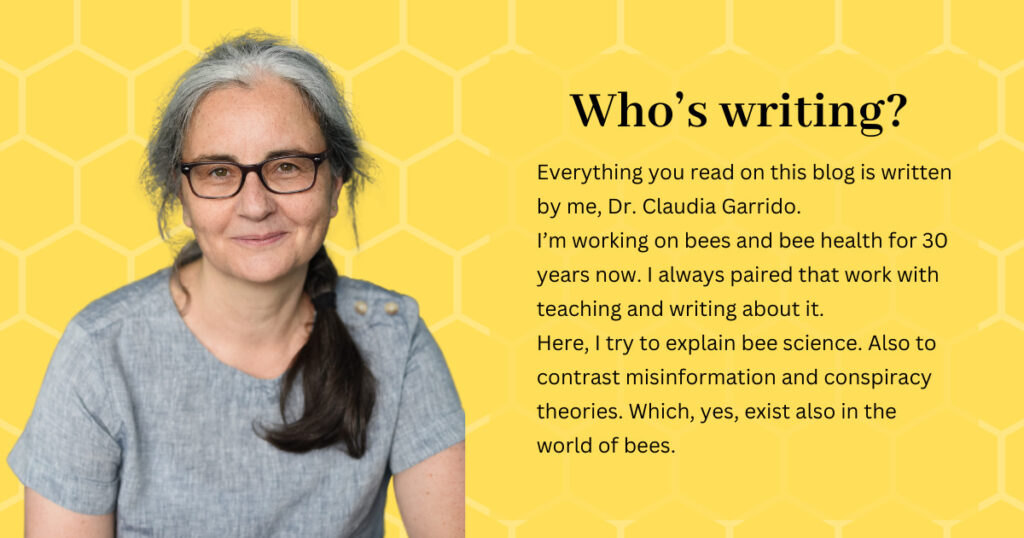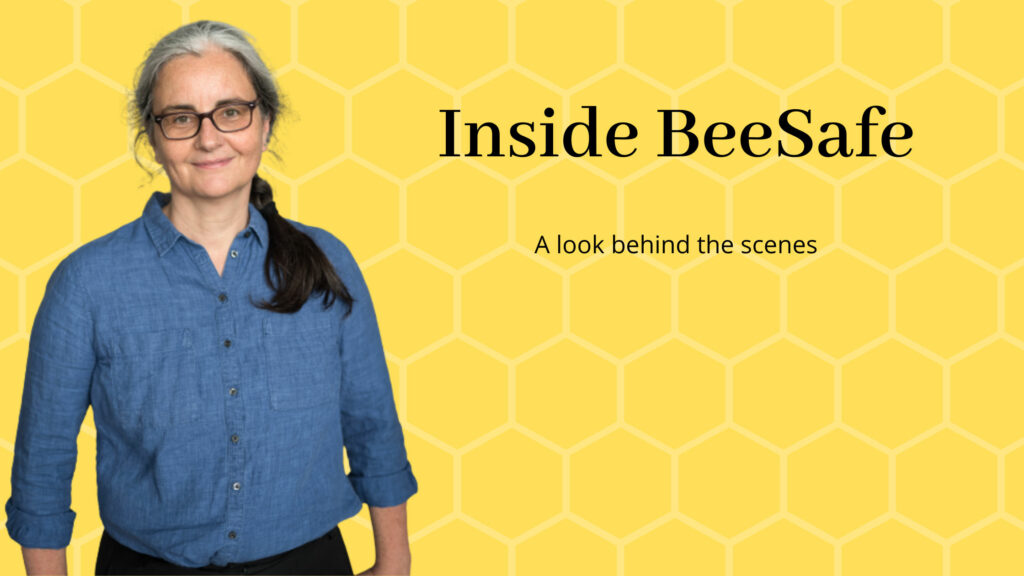Last week, I had the great opportunity to teach at the bee pathology course in Bologna again. It was an exceptional group, very active – they squeezed us like a lemon with questions! It’s really fun to teach like that.
Obviously, such a course is very different from lessons in school. The beekeepers and vets that come are motivated to learn: They recognized that they need to know more about bee diseases. That’s a privileged situation for a lecturer.
This pathology course in Bologna is always special, though. It’s a good example of collaboration between scientists, vets, and beekeepers – which in my opinion is the right approach to improve the situation.
This course is also the only one I know that has this high level of the topics: High scientific rigour with strong relationships to the practice, that’s the goal. And from the reactions we teachers got (and the final evaluation) show that we’re definitely on the right track. Because education isn’t only about what you know, but also if you’re able to apply it.
Keeping up with science for better practice
Beekeeping has a strong foundation in tradition in many places. Knowledge, for a long time, went from one generation to the next. That worked pretty well for a long time. But as everything, beekeeping also changed over the years. And with it came the awareness that maybe some more systematic knowledge, aka science, would be helpful.
Maybe the “mysterious” Isle of Wight Disease was the first example for that. These were higher colony losses on the named island in 1904 which couldn’t be explained properly. The suspect was Nosema apis, a gut parasite. It was only many years later, in 1920, when Acarapis woodi (traqueal mite) was described. So, a “new” parasite, a mite that lives in the trachea (the respiratory organ) of the bees. Not nice.
But, here in Europe at least, this parasite isn’t a big issue anymore. Personally, in almost 30 years in the field, I’ve never seen it. A reason for this are the widespread varroa treatments. Those also affect traqueal mites. But apparently in North America it’s more common. Which brings me again to good practices and the bee pathology course in Bologna.
New lessons at the bee pathology course and exotic parasites
This year, it was the first time we introduced a lesson on good practices in this course. When I say “we” it’s because the organizer of the course, Dr. Antonio Nanetti, asked me if I would change anything in my lessons. Especially, as two weeks earlier, there was already another course (for “expert beekeepers”) and we discussed some of the topics there, too. And as I’m talking a lot about good practices in this period, I said that I could do a lesson on this topic. And it was well received – by Dr. Nanetti and also the participants.
Good practices are the foundation for the health of managed honey bee colonies. I always say that beekeepers are the most important environmental condition for their colonies. What they do (or don’t) directly influences how their colonies get along. That’s what I mean by “responsibility” – putting the bees first, so that you create the conditions they can do what you ask them to.
The Isle of Wight Disease may have been the first occurrence of massive colony losses. And as the cause wasn’t clear for many years, it was also difficult to find preventive measures. Nowadays, we’re mostly dealing with such “new” or exotic issues. Varroa mites, Nosema ceranae, Tropilaelaps on the horizon… all these are parasites from other honey bee species (Apis cerana for the first two and A. dorsata for Tropilaelaps). Due to varroa, we have adapted our management. Varroa treatments are definitely an element of good practices. We will have to adapt further with future challenges. Good practices in the future will surely include measures to avoid the impact of the climate crisis and all the pathogens that may help to distribute.
Good practices developing over time
For being able to do so, learning, courses like the one in Bologna are essential. A beekeeper’s education is crucial for the survival of his colonies. Learning prevents colony losses. And it also gives you the foundation for new challenges. The more you know, the more tools you have to adapt. For instance, I’m still quite calm about Tropilaelaps. There are some substances we use for varroa that work on them, too (mainly formic acid and thymol). This means that this parasite won’t hit us unprepared as varroa did. Where we had to begin from scratch.
We will surely have to change our practices many times. This will happen perhaps with higher frequency than in the past. And also in this case learning helps: With courses, workshops, magazines, or blogs like this one you can stay up to date. Get the information you need to keep your colonies alive and thriving.

P.S.: If you want to know how I teach honey bee health: I wrote a Bee Health Compendium which gives you a first glimpse into my approach.


